When you buy through our links, we may earn a commission.
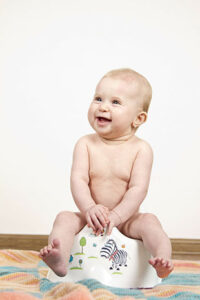 Potty training using a very GENTLE method with QUICK results and having FUN at the same time. Does it sound like a way you want to potty train your child? Then you’ve come to the right place and guess what, everything on this page is FREE!
Potty training using a very GENTLE method with QUICK results and having FUN at the same time. Does it sound like a way you want to potty train your child? Then you’ve come to the right place and guess what, everything on this page is FREE!
 My name is Thomas and I’m a father to 2 wonderful kids. I consider myself being an organized and structured person and this is also what people around me tells me.
My name is Thomas and I’m a father to 2 wonderful kids. I consider myself being an organized and structured person and this is also what people around me tells me.
It’s no surprise that I had lots of plans for me and my wife’s parenting long before we had children. I had researched the ultimate way to maximize time with my children after birth without affecting our economy or using up parental leave days. I’ve been home with my children for more than 2 years and during this time we took the opportunity to travel and see the world. Well more on that in another article. 😊
We knew all about introducing food at the right time to minimize the risk of allergy and to make them less picky with food. Then we read about sleep training and when to start with sleep training. We even planned which month of the year we wanted our children to be born so it would be most beneficial for them and us considering the climate where we live. And of course, we did lots of research on potty training!
I think that the better you are prepared the easier it will get when things turn up. You can’t prepare for all possible things and you shouldn’t try to either, just the practical stuff and what’s essential to you. If you think it sounds boring and worry about being too prepared, then don’t worry, there will still be lots of surprises!
Is it hard to potty train?
Potty training can be as easy or complicated as you choose it to be. There are many different opinions on how to do it and there are different ways that work more or less well with different children. There are many books on the subject and I’ve read quite a few of them. I might do a separate post about potty training books later because some differ a lot.
In this post I will help you with the basics and give you some advices to get you started with potty training. These are my personal opinions based on my own experience and literature that I’ve read. You could say that I’ve taken the best parts and put them together into a method that reflects my values and what I think is sound for the child. Both of our children were potty trained at very young age and didn’t need diapers as early as before the age of 1.
How do I know if my child is ready for potty training?
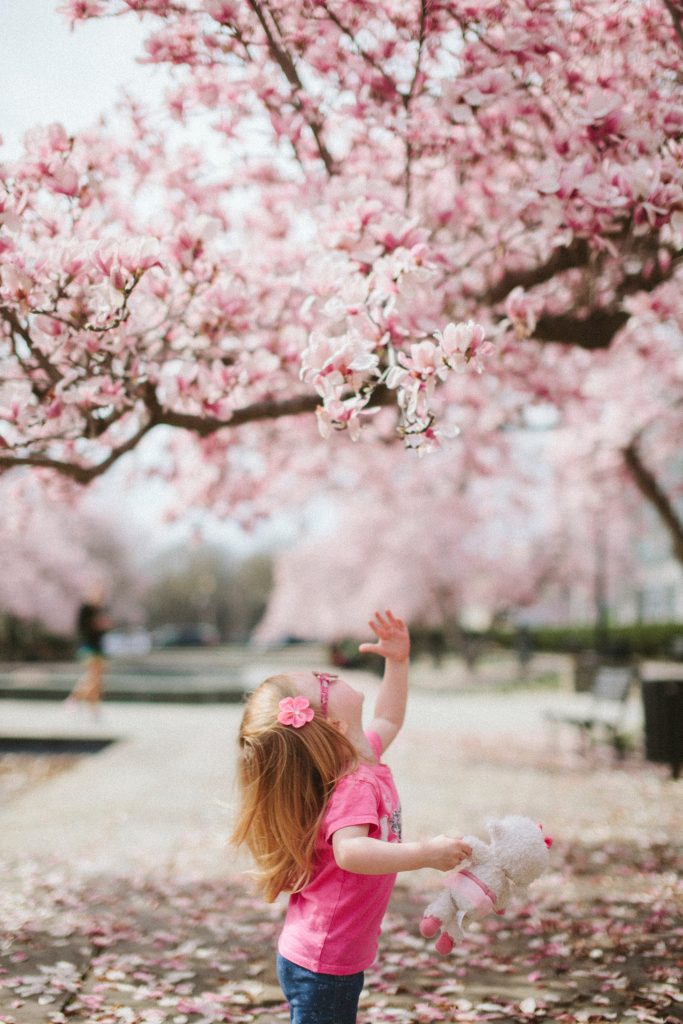
Or “I don’t think my child is ready for potty training yet”. These are the most common questions or statement I hear from friends and people I talk about potty training with. So how do you know if he or she is ready? From my own experience and from what I’ve read in many potty training books, there is no such thing as being ready for potty training. You can start potty training right from birth if you want. In fact, I recommend you to start as early as possible. I understand that this probably generates several new questions for you. My child is 3 years old, will it be much harder for me to potty train? How do you potty train a new born baby? Don’t worry, I’ll answer those questions as well.
It’s true that in most cases it will be easier to potty train if you start right from birth. The reason is that it will become natural for your baby to use the bathroom when she grows up since she always did this. It will also become a natural part of parenting for you as a parent instead of changing your routines later on. You might think it’s a lot of work doing it from birth and sure it is! But changing dirty diapers is a lot of work too, you just have to choose where to put the effort. 😊
What about an older child?
In case your child is older you must use a different approach. Please don’t worry, it’s never too late (or too early) to start and it’s not much harder either. You will have more options to choose between and not all methods will suit you and your child. It’s also important to not stress the child or have too high demands on her or yourself. In my opinion It should be a fun experience to potty train! My article about when to start potty training goes even deeper on the subject, please check it out here.
My child prefer diapers
This is very much related to “Is my child ready” above. Many children are happy with diapers and show no interest in the potty. There’s a very simple reason for this. The diaper industry wants you to buy diapers, that’s how they make money! This is why there are diapers for pretty much all ages. When you stand in the store, looking at the diapers, you see there are many different sizes of diapers and most are usually larger than the ones you need right now. This gives you a feeling that you should keep buying diapers until you get to the next and next and next size.
The other thing diaper companies have done is that diapers have been designed to absorb a lot of liquid extremely fast! This makes the diapers comfortable and convenient for the child since she can pee wherever she wants without having any consequences. In most cases this is a good thing but it’s not natural and prevents your child’s natural development. Did you know that the average child use diapers until they are 4 years old?! In the 70’s the average was 2 years old. Even further back, in the 50’s, children were usually dry between 12 and 18 months!
So what can we do about this? I’ll talk about it more in detail when we get to the actual training but this means you have to take control and not wait for your child to be “ready”. The initiative to start potty training must come from you.
Should I use a potty or go straight for the toilet?
It might sound obvious, I mean it’s called “potty training” so of course we should use a potty, or..? What if we could teach our children to start using the toilet immediately and just skip the potty? Wouldn’t that be even better? Both methods have their pros and cons which I will talk about here. Going straight for the toilet will require a bit more work from you as a parent but it will make life easier when leaving your home and also when your child gets older and should transition from the potty to a toilet. Here’s the reason.
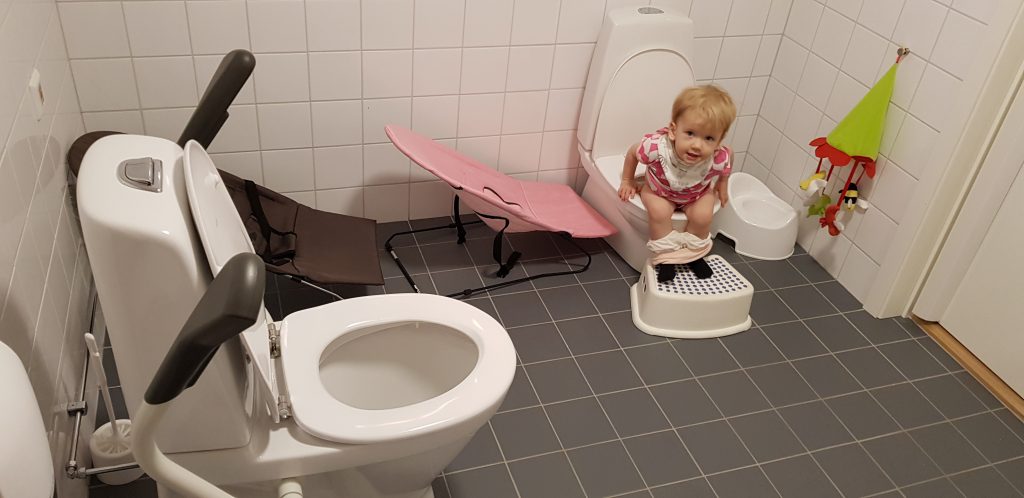
Disadvantages using toilet
Unless you have a child sized toilet (yes, they do exist and you can get yours here), which most people don’t have, you will have to help your child get up and down from the toilet every time she has to use it. When she grows older you can use a stool, but you will still have to supervise her in case she is about to fall. You will also need a special toilet seat so that she doesn’t fall into the toilet when sitting down. Most likely you’ll need one of these later on anyways. These are the cons, so what are the benefits?
Advantages using toilet
Well, first of all she will be used to using a toilet from start and no transition is needed when she gets older. Toilets can be found almost everywhere whereas you would have to bring a potty with you all the time when leaving the home to be sure that there is a potty when needed. It’s not uncommon that children who use a potty gets very picky and only wants to use their own potty. Then you also must figure out a way to dispose the “payload” and clean the potty somewhat after each use. On the toilet you just press the button (which most children love to help with) and then you’re done. 😊
Summary – pros and cons with toilet:
- No transition from potty to toilet needed.
- Toilets are common and can be found almost everywhere (except for when you really need one 😉 ).
- No potty needed.
- No potty cleaning needed.
- You always have to be present when she is using the toilet.
- Requires a child sized toilet seat which you have to buy.
Here you can buy your own child sized toilet
This is a pretty cool toilet seat with ladder which we have been using
Advantages using a potty
Now that you know the pros and cons with potty training on a toilet lets talk about the benefits with potty training on a potty. The most obvious one is that she will be able to use it whenever she wants without your intervention. This is a huge benefit for you since you don’t have to follow her to the toilet several times a day. It will also make your child feel more independent. Since she will be able to decide on her own when to visit the toilet she doesn’t have to tell you every time she needs to use the toilet.
For children who are not talking much yet this is positive since language could be a potential barrier. Language doesn’t have to be a barrier, there are other ways too which we will talk about later. The potty is not permanently fixed like a toilet which means you can move it around the house or even put in the garden if you would like. This can be both a pro and a con which we will talk about later. Potties can be designed and decorated in ways that make children want to interact with them. This can make things easier especially if the child is older.
Disadvantages using a potty
What are the cons then? Apart from the ones we already talked about when listing the pros for starting potty training on a toilet these are some things to consider. Unless your child tells you or you see it in action, you will not know when she has used the toilet. This can cause a number of potential “disasters”. The things that end up in the potty can also make its way to other places in your home. I think you get the picture? If she has siblings in a “risk age” then multiply that risk of disaster with the number of siblings in the home…
You will also have to regularly check the potty for faeces and when needed empty and clean it. If you move the potty around the home and perhaps even take it with you when leaving the home, she will not build an association between the bathroom and where you wee and poo. Since she is used to always have a potty with her she can wait longer before telling you she needs to go. This is likely to cause accidents when the potty is unavailable or when transitioning to a toilet. You will also not know how well or if she cleaned herself after using the potty unless you were present.
Summary – pros and cons with potty:
- Your child can use it whenever she needs.
- Your child will feel more independent.
- No language barrier, she doesn’t have to tell you when she needs to go.
- The potty is mobile and can be placed wherever you want.
- Risk of “disaster”, unsupervised deposit of feces can end up anywhere.
- Requires regular inspection and cleaning of potty.
- Risk of not building an association between bathroom and where to wee and poo.
I recommend the following scandinavian designed potty for it’s stability and ease of use. It’s very popular amongst Swedish child care centres.
If you need a travel potty as well, then this leakproof one is the perfect choice.
As you can see there are pros and cons with both starting potty training on a potty or starting potty training on a toilet. Both methods require some but different effort from you. In the end it’s up to your personal preference and what you think will work best for your child and the situation you are in.
If you can’t decide between toilet or potty you could always get this popular “toilet potty”. It’s a potty that looks like a miniature toilet. It has flushing sound and everything. Pretty fun!
You can get yours here.
Never force or stress your child when potty training!
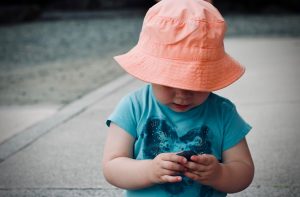
I can’t emphasize this enough, it’s the most important thing to remember for a successful and pleasant potty training. There are many ways and opinions on how to raise children into decent grown ups ready for the adult life. In the end all children grow up but how they get there will affect how they turn out as individuals. We as parents have a huge influence on what they will bring in their backpack on their biggest journey ever.
This post is not going to be about raising children but I want to make a point here. Some people believe in a more strict approach when raising children and others have a more relaxed approach. Then there are dozens of approaches in between. I’m not judging anyone, in the end it’s about which approach you believe in.
Potty training should be fun!
The same goes for potty training. I advocate a more gentle potty training technique because I believe it will give my children a positive experience which will make them grow as individuals. This doesn’t mean you can’t be strict or set up rules, you can and being clear to your children is good since it will make them feel secure. Never make them feel bad or guilt but encourage them and guide them.
As an example, if there’s an accident you might say “Oh no, look what you’ve done, now I have to clean and change your trousers, why didn’t you use the potty like I’ve showed you?”. This will make her feel guilt and stressed about what to do next time. Instead, I would try to use a more encouraging approach, for instance “Oh noo, look there’s wee wee! That must be sooo uncomfortable for you? Do you remember what to do when you feel that you need to wee wee? Please come and let me show you”. The goal is to make our child interested and wanting to learn how to not get wet.
Should I praise and use rewards? and “look-at-me-children”
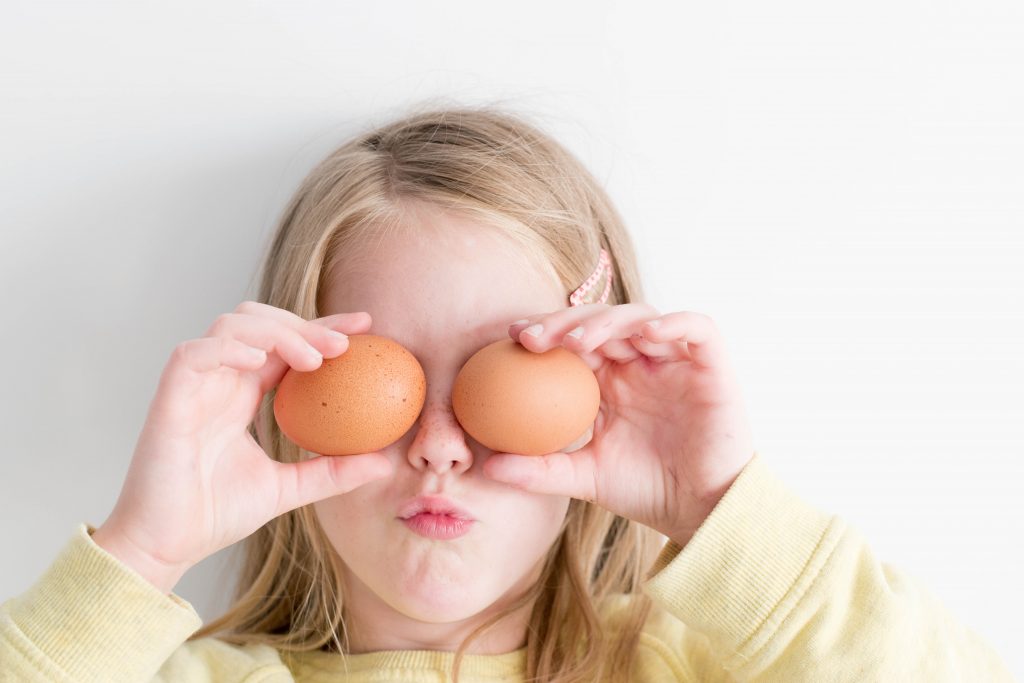
Do you remember every time your child did something new or perhaps built something by herself? When she made a drawing, said her first word or perhaps did a wee in the potty. You just want to praise her and tell her “well done” and how good she is! As a parent our children are the most amazing little creatures in the world! So it’s no surprise that we get excited every time they do something new and of course we want to share it with them. What could possibly be a problem with that? Well, that’s where “look-at-me-children” come into the picture.
“Look-at-me-children”
Children who keep hearing how good they are, are likely to start put a higher value in what they do instead of themselves. This can lead to a low self esteem. Eventually you will have a child calling “look at this, look at me, look at what I can do” and so on, all the time. This is because she is looking for love and attention and she has learned that she will get it by doing things. Unfortunately this can lead to her feeling that what she does is what we value and thus giving her a bad self esteem.
I could go deeper on this subject and there’s a lot more information out there. However, this article is about potty training so I’m just going to add an example on how to give feedback that doesn’t “harm” your child.
Let’s say that your child did a drawing, instead of saying “wow that’s amazing, you are so good!”. You could try to be more curious and show interest in what she has done. “I can see you did a drawing, please tell me more about what you’ve done!”. If your child brings you a bracelet she did herself, instead of telling her “did you do this bracelet yourself? That’s so sweet, you did very good!”, you could tell her something like “thank you so much for this pretty bracelet, I like it so much because it reminds me of you”. You want to say things that makes her feel appreciated for who she is and not what she has done.
Avoid praise and rewards
When it comes to potty training there are two main problems with praising and rewarding your child. The first problem is what I explained above. The second problem is that you will associate the potty or toilet with performance. Some things should not be associated with performance and there are two things where I think this is extra important. Using the toilet and eating. These are activities that should be natural and relaxed, not associated with performance. I know many potty training guides advocate the use of praise and rewards. It is likely to be very successful and make the process easier for you as a parent. I still recommend you to try without first which is more sound for the child.
What if she does something on the potty, should you just remain silent and pretend it’s raining? No, not at all. There are lots of things you can say that’s not related to performance. I usually say something like “I heard you wee wee! That must have felt good!”. If it’s poo than I sometimes do a splash sound and say “It feels good to poo, doesn’t it?”. Then we giggle. 🙂
Let’s prepare for potty training!
To be successful in potty training it’s of outmost importance to be well prepared. When it comes to preparation it’s especially one thing that matters and that’s you! Your attitude, being calm and knowing what you are doing will have a big impact on how secure your child will feel. Having a plan so you can give clear instructions and being confident in what you are doing will help your child to pick up the new routines more easily. As I mentioned earlier there are more than one method to potty train and not all methods work well with all children. It’s important to stick with one method while trying and not switch between methods. If it’s not working then stop the training and begin again in a few days using a different method. Switching between methods during a session will make the child confused and might cause resistance.

Read a book
Read, read, read and read again. You can’t read too much in order to be prepared. Not only will books give you good ideas and mention things you didn’t think of. They will also give you a larger perspective in how you want to roll out the potty training. They will also, which might be even more important, describe methods which you don’t want to follow. You will only know them by reading a lot about different methods, else you won’t be able to compare them to anything. I recommend reading some of the following books.
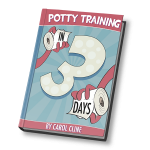 Potty training in 3 days by the famous Carol Cline
Potty training in 3 days by the famous Carol Cline

Oh Crap! Potty Training by humoristic Jamie Glowacki
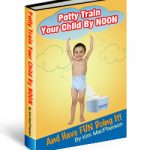 Potty Train Your Child By NOON…And Have FUN Doing It! by down-to-earth Kim MacPherson
Potty Train Your Child By NOON…And Have FUN Doing It! by down-to-earth Kim MacPherson
Potty Training in 3 Days by goal-oriented Brandi Brucks
Get the essentials
If you plan on potty train on a potty you will have to buy a potty. If you plan on potty train on a toilet you will have to buy an appropriate toilet seat and perhaps a stool for easier access for your child. There are combos with a seat and a ladder (2 in 1) which are nice but slightly cumbersome if the toilet is shared with adults. A stool and mobile toilet seat is easy to stove away when not needed.
You will need a lot of underwear or trousers. I recommend AT LEAST 20 pairs. Trust me, you will need more than you think. If you don’t have that many already, you can get underwear very cheap online. I recommend these cheap panties for girls. Or if you’re like me and prefer organic clothes then I recommend these popular organic panties for girls. For boys I recommend these boxer shorts. Or if you prefer organic these organic briefs for boys are very popular.
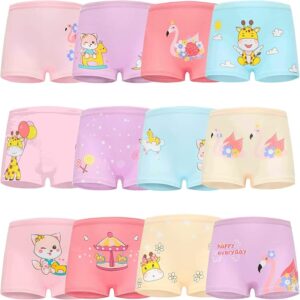
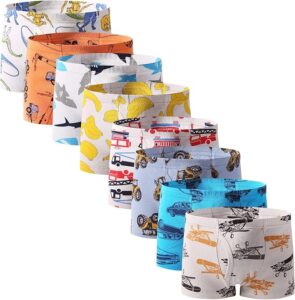
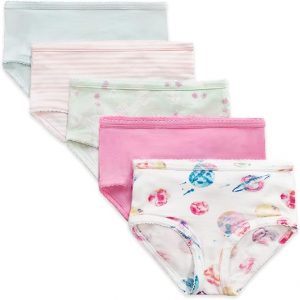
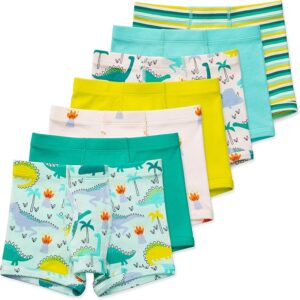
Read for your child
 The best way to prepare your child for what’s coming is to read children books. There are plenty of books about using the toilet or potty that will make your child curios and want to do the same. This is a great way to start a bit of interest in potty training before starting. The goal is to make your child familiar with the potty so when she sees it she know exactly what it is and how to use it, even without you showing her. This will make the potty training much easier. The potty books are great!
The best way to prepare your child for what’s coming is to read children books. There are plenty of books about using the toilet or potty that will make your child curios and want to do the same. This is a great way to start a bit of interest in potty training before starting. The goal is to make your child familiar with the potty so when she sees it she know exactly what it is and how to use it, even without you showing her. This will make the potty training much easier. The potty books are great!
Children are smart and quick learners so it’s not uncommon that they get the hang of it after just 1 day if you’ve read books repeatedly during a prolonged time before starting potty training. But remember not to get your expectations too high. Every child is unique and need different amount of time to get acquainted with the potty. I’ve added some of our favourite books below for you to choose.
P is for Potty! (Sesame Street)
Potty Animals: What to Know When You’ve Gotta Go!
Potty training a newborn baby
All right, let’s get a bit more practical. How do you potty train a newborn baby who can’t even sit up or who can’t communicate except for screaming? First of all, is there any difference in how to potty train a newborn boy or a girl? Not really, but you have to be a little bit more aware when training a boy, unless you want to risk having pee all over the bathroom. 🙂 But it’s not difficult at all. Potty training a newborn baby is quite different from potty training a toddler. The goal with potty training a toddler is usually to have them use the potty on their own when they feel a need to. Or at least tell you when they need to wee so you can do it together.
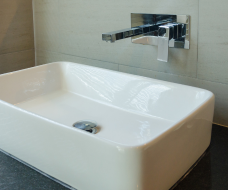
What to expect?
As you know, a newborn baby won’t be able to get herself to the potty. She can’t talk or communicate that she needs to use the potty. She probably even can’t control her bladder. So what’s the point of potty training then? The idea is to make the potty, toilet or going to the bathroom when needed to something natural from as long as the child can remember. This can make her diaper free very early. You will also learn to read her signals when she needs to use the toilet. The first thing that usually happens is that she stops pooping in the diaper and instead gives a signal when she needs to poo. As a parent changing messy diapers several times a day you will probably agree that this is so worth it!
Get started
So how do you get started? The easiest way to get started is to add small actions to your ordinary routine that makes a big difference. For instance, every time you change diapers you also have to clean her. This is a perfect opportunity to create a “bathroom association”. When cleaning you can hold your baby under the faucet and flush some lukewarm water on her groin while cleaning. When you are done cleaning you can keep holding her over the sink while telling her some sort of word, like “wee wee wee wee wee”.
It’s very common that the baby will start to wee (and sometimes poo) when you do this and if it doesn’t happen the first time, just keep doing it again every time you change diapers. Only hold her for a short period of time, approximately 30 seconds or until she is done peeing. If it’s a boy you have to “aim” so you don’t get wee all over the bathroom. You can either hold him in a more upright position or if it’s not enough then try to put a finger on his penis so the wee goes into the sink.
Stay consistent
When your child gets the hang of it and responds to your “trigger word” you can start holding her over the toilet instead if you prefer. When our second child was born he actually did his very first pee in the sink at the hospital. 🙂

The good thing with this method is that she will stop using diapers without much extra work from your side. While she’s still using diapers you have to clean her when she did something in the diaper. So why not do it in the sink? As your child gets older she will prefer using the sink and start trying to signal when she needs to go. You must be perceptive to these signals. Every child is unique so I can’t say what signal your child will use. It can be some sort of scream, a noise, a move, a look or it could be just a feeling between you and your child. This technique is part of something called elimination communication.
Summary
Let’s do a recap.
- Boys and girls are potty trained the same way.
- The goal is to give an association between bathroom and wee or poo.
- The child usually stops using the diaper very early.
- Hold her over the sink and flush some water every time you change diapers.
- Always say the “trigger word” when you want her to wee or poo.
- Remember to look for your child’s “signal”.
Potty training a toddler or older child
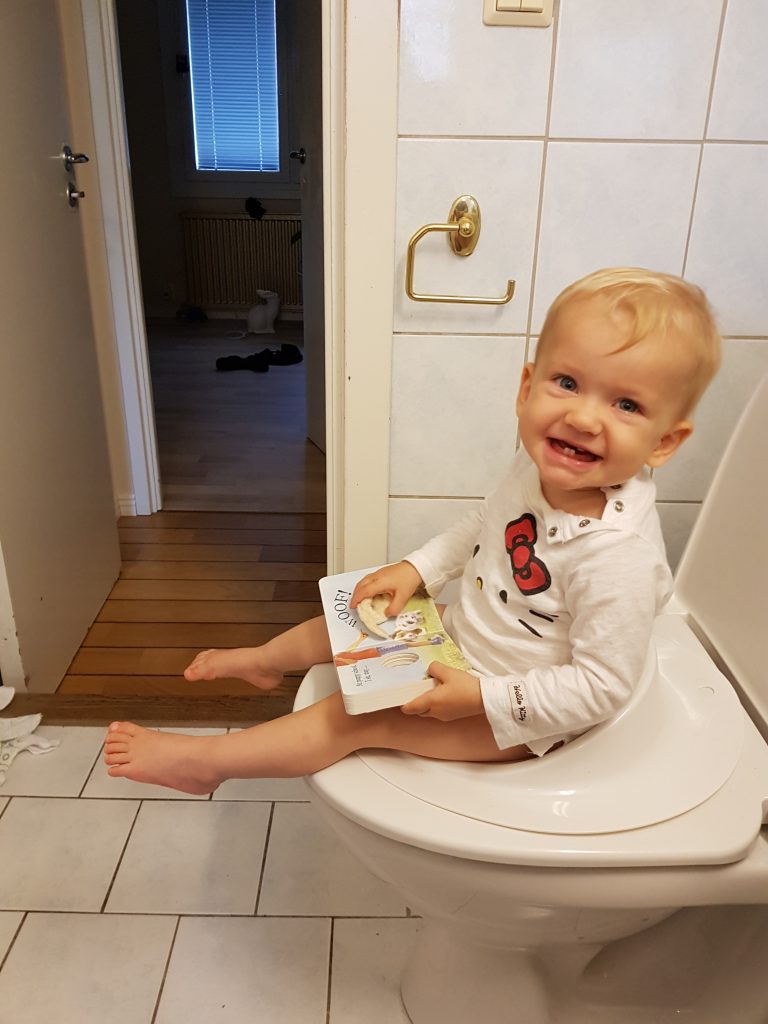
When your child is old enough to go and sit on the potty by herself you can start practicing “real” potty training. If you did the baby potty training described above the transition is usually longer with more steps involved but the end result is pretty much the same. I will not go through that here but save it for a separate article. Let’s assume you’ve decided that now is the time to start potty train your child. She might be 1, 2 or 3 years old, it doesn’t matter. This method is still the same.
Remember, the goal here is to make her independent and use the potty whenever she feels a need to. Depending on if you plan on using the potty or toilet, the goal could be to make her tell you when she needs to use the toilet, so you can go there together. Whatever your goal is, make sure you have it clear to yourself and stick with it.
I have divided the potty training into phases. The first one is familiarization.
Familiarization
You want the first meeting with the potty to be a success. It’s natural to be skeptical and afraid of things we’ve never seen before. To avoid this from happening we want to familiarize our child to the potty before they get a chance to meet it. We also want to create an interest and make our child curious about the potty. This will make her want to interact with it without our intervention. The best way to do this is to read books like I described further up.
You don’t want to show her tv-programs, videos or YouTube clips with children using the potty. When reading books (they can still be digital) something happens in our brain. We must think and use imagination in order to create a picture about what we are reading. When we watch a movie this never happens because we get everything served for us. This is important in order to create interest and curiosity to the potty. Add a few books about potty training to your collection of books you use to read at bed time. It’s a good idea to do this long before the actual training starts, perhaps weeks or even months.
During this period it’s also good to start practicing dress and undressing. Depending on the age this might be something your child is already doing. After 18 months they often “can” and want to do everything by themselves. 😊 Just ask your child to pull down her pants when you are about to change diapers and to pull them back up when you are done. It’s best to do this while she is standing up. It’s a bit tricky when still using diapers but it will be easier once we get them off later on in the training.
I want to share a trick that always work with my children. If they get to choose between 2 things they will feel it was something they decided. Even if both options were things they didn’t want to do at all. For example I always tell them “do you want to take off your pants by yourself or do you want me to do it?” The answer is always “myself!”. This can be applied to almost everything! “Do you want to eat by yourself or should I feed you?” “Do you want to read a book or go to sleep?” and so on. 😊
The first meeting
If the familiarization worked out well this will be quick. On the day you’ve decided to start potty training, place the potty in the bathroom when she’s a sleep or doesn’t notice. Don’t tell her about the potty. Tell her you must use the toilet and then go to the bathroom. Either she will follow you there or join you after a while when she notices that you’ve been away too long. Let her notice the potty on her own and act surprised when she tells you what she has found. Let her explore it on her own and carefully assist her if she asks for help.
If she seems confused you can remind her about what you’ve read and ask her if she wants to try it. If she says yes and if it’s needed you can ask her if you may help her. It’s very important that you let her try on her own and that you intervene as little as possible. If she’s hesitant it’s better to come back later and let her try again on her own. Never be pushy!
The wet phase
Be prepared for accidents and have lots of patience. This is the hardest part of the training. Remove that “dry clean only carpet” that you got as a wedding present and cover other things that might be difficult to clean. Next time you change diapers you don’t put any new ones on. Only put on trousers or underwear. You can use both if you want, but it’s not necessary.

Using both underwear and trousers can make it harder for your child to get her trousers off, so I recommend not to use both unless you are certain she will handle it without a problem. When the diapers are off and trousers back on, tell her that she doesn’t have any diaper now and that she must use the potty when she needs to wee or poo. Else it’s going to get wet and uncomfortable.
Chances are that your child doesn’t know how to control her bladder. If that’s the case then it won’t take long before there’s an accident. Once it happens tell her something like “Oups I can see there’s wee in your pants, that must be very uncomfortable. Let’s go and change pants”. Then walk her to the bathroom (avoid carrying her) and when she sees the potty tell her “If you don’t want to get wet again you can use the potty when you need to wee, do you want to try?” Hopefully she will want to try. Ask her to take off her pants and sit down on the potty. Tell her that she can try to wee if she wants.
If there’s pee, don’t reward her. Just tell her that you can see there’s pee in the potty and that it must have felt good to pee. Dry her clean and put on new trousers and repeat the process again until she learns to control her bladder. In case she doesn’t want to sit on the potty or there’s no pee when she sits on it, don’t push her. Just change the pants and repeat the process again.
When your child can control her bladder, depending on age, they usually can last for about 2 hours or more. Keep your eyes open for signals that your child needs to use the toilet but don’t ask too often. It’s better if there is an accident than you keep asking too often. Keep using diapers during nap time and during the night. When the diapers are dry when she wakes up for a prolonged period, you can stop using diapers when sleeping as well. This usually happens later.
Going outside your comfort zone
In the beginning you should stay close to your home. When your child is dry you can start doing excursions and move further away from your home. Bring some extra clothes and something to keep wet clothes in. You also need to bring a potty when you get too far from home. It’s good to know that when your child gets excited and very much into a game she might forget that she no longer has a diaper and it’s more likely for an accident to happen, but it’s good practice!
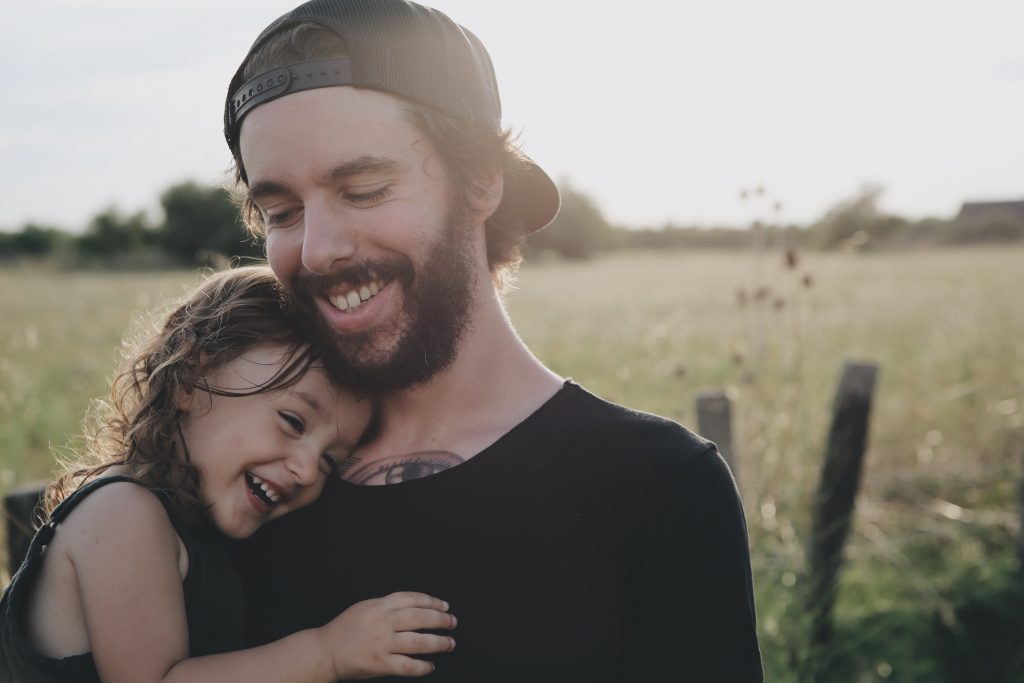
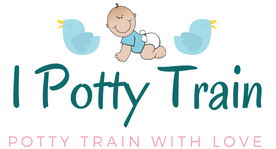




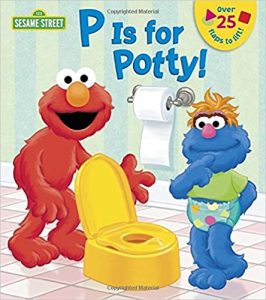
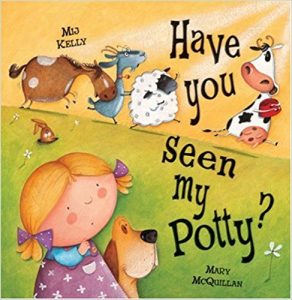

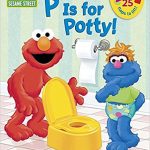
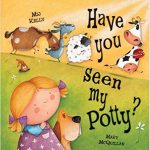
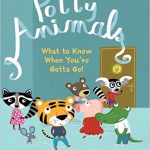
Great content! Keep up the good work!
Wonderful web site Lots of useful info here Im sending it to a few friends ans additionally sharing in delicious And obviously thanks to your effort
Hello.
Good cheer to all on this beautiful day!!!!!
Good luck 🙂